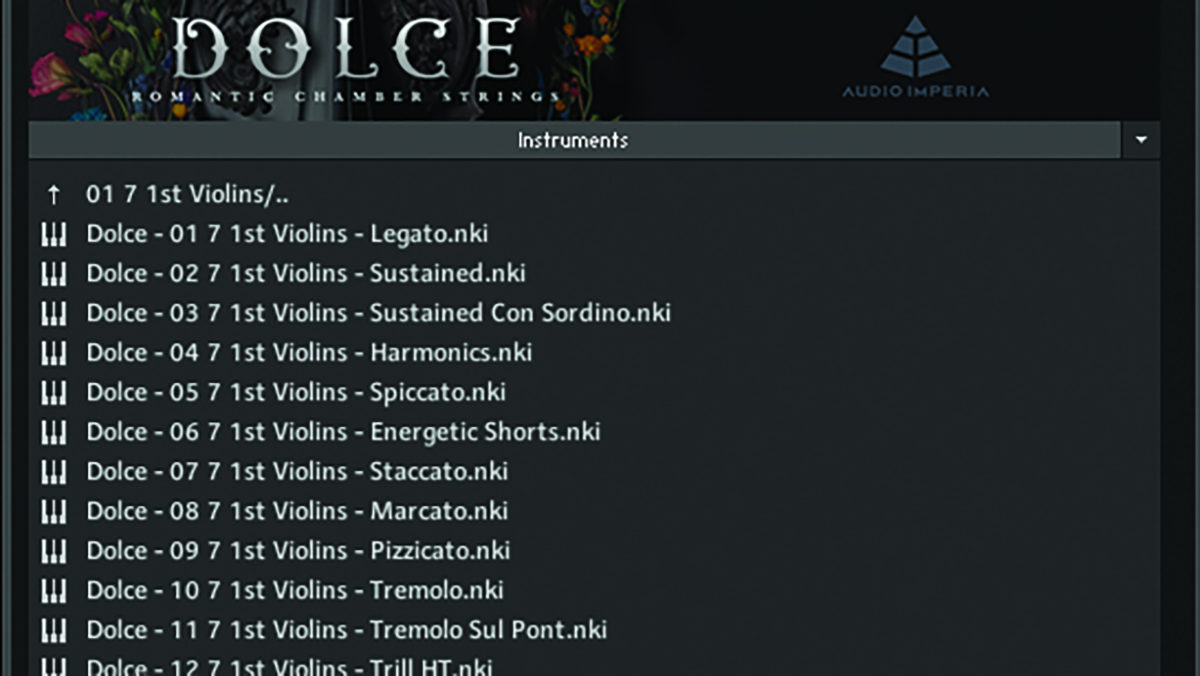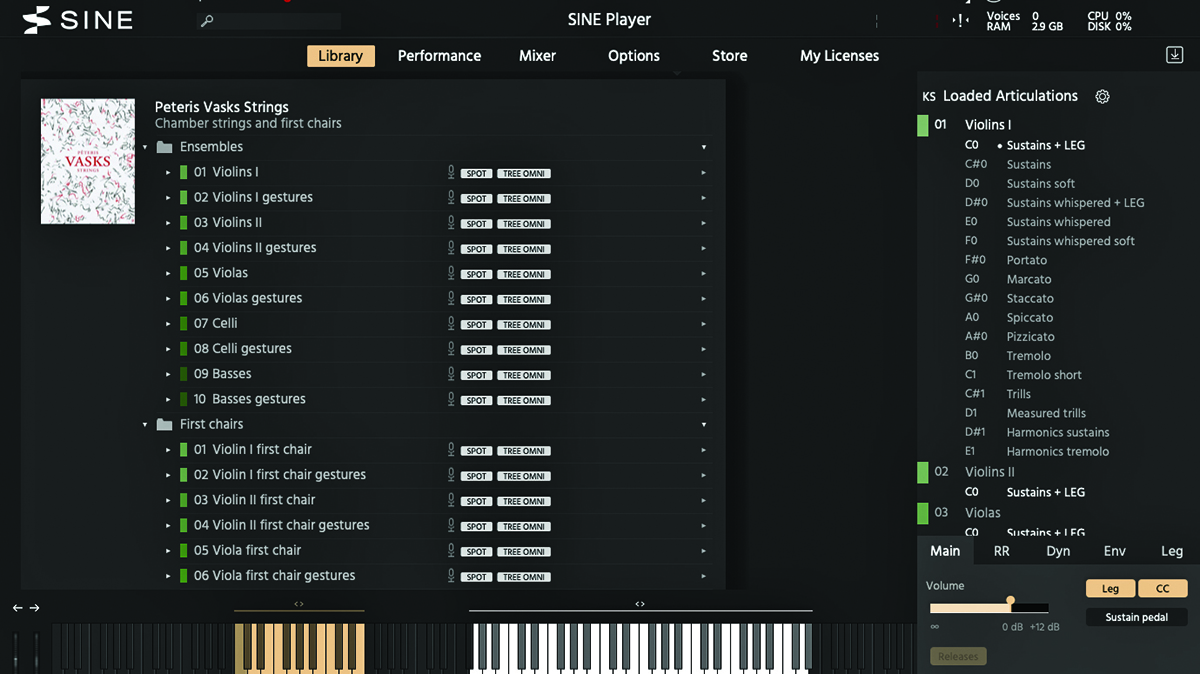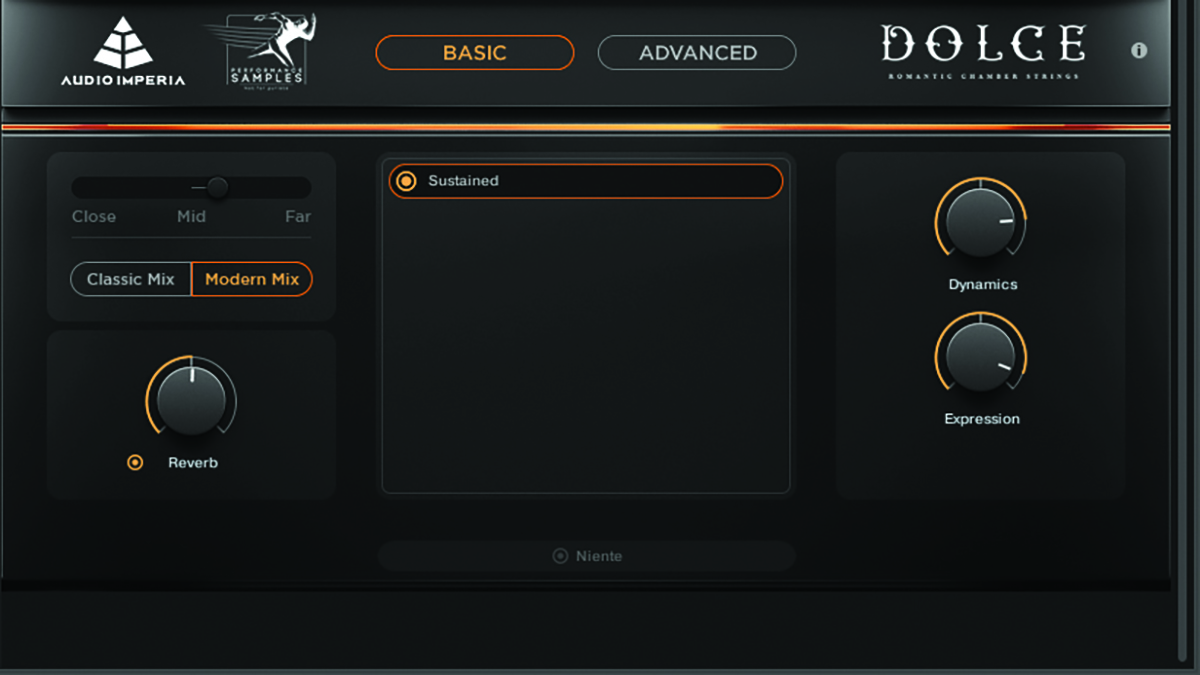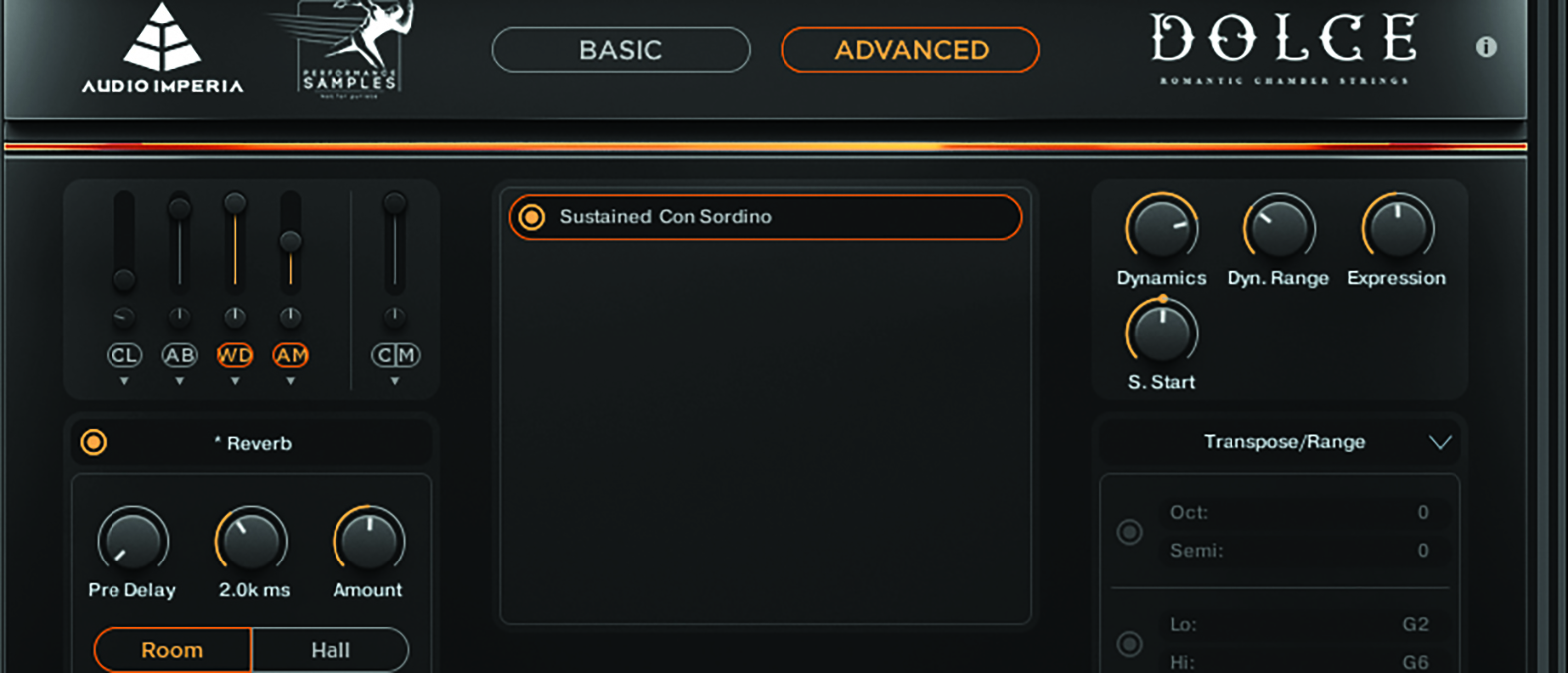MusicRadar Verdict
Dolce is the perfect contrast to the larger libraries currently available. Its purity and expression is exemplary, and incredibly appealing for a number of different production settings.
Pros
- +
Beautiful, dynamic collection.
- +
Extensive range of articulations.
- +
Ensemble patching is always useful.
- +
Very easy to use on many levels.
Cons
- -
No keyswitch patching.
MusicRadar's got your back
Audio Imperia Dolce: What is it?
If there is one word which we’ve liberally applied to Audio Imperia releases in the past, it is ‘epic’. Known for its superbly-styled cinematic sounds, Audio Imperia has garnered a reputation for classy orchestral and cinematic sounds, which gravitate to a large canvas.
In a no less welcome change of direction, Dolce is a library which has been collaboratively created between Audio Imperia, and Jasper Blunk from Performance Samples. Stacking up to a sizeable 80GB of samples, Dolce endorses a smaller orchestral footprint, concentrating exclusively on strings. The sampling gathers 21 players, with the 1st Violins comprising seven players, down to three players in each of the cello and double bass sections.

Audio Imperia Dolce: Performance and verdict
The emphasis within Dolce is centred around expression; this is evident through a subtle amount of vibrato, which infiltrates much of the library’s sustained components. This is more obvious in certain places than others, with the marcato or pizzicato patches exhibiting a non-existent vibrato quota. There is a healthy contingent of articulations across-the-board, encompassing sustained samples (in both open and con sordino iterations), spiccato and marcato, tremolo and trills. There is however a lack of keyswitching options, relying on the user to create multiple articulation instances within Kontakt themselves.
The emphasis is centred around expression, evident through a subtle amount of vibrato
Audio Imperia has always done its utmost to make it easy to find the orchestral sound that you require, and that principle continues in Dolce. Switching from the Basic tab, to Advanced, you gain access to more parameters. Dynamic timbral control is provided through the usual modulation wheel, while expression is available at the channel level. There is no ability to control vibrato, but this never feels overbearing. Arguably, the intensity of the vibrato increases with the dynamic volume, with a minimum of fuss.

• Orchestral Tools Peteris Vasks Strings
Offers incredible detail and exceptional legatos, albeit with considerable latency.
• Spitfire Chamber Strings
Recorded at Air studios, Chamber Strings remains one of the classiest string packages around.
The other control element, at the sonic level, relates to either a Classic or a Modern mix. Within the Basic tab, a simple see-saw fader glides between close and distant miking, while clicking the Advanced tab releases access to four mic faders, ranging from close to ambient signal paths. The acoustic captured within Dolce is relatively dry, in keeping with the best cinematic studio traditions, but the on-board reverb engine will allow the signal to be sweetened further through reverb if required.
Apart from the individual instrument articulations, ensemble patching is also included, which is always helpful when sketching out initial ideas. Other Audio Imperia libraries employ the Sample Start pot, which allows the user to dial back the amount of latency when playing. This is also present here, but only available on shorter articulations. As a consequence, there is some latency in legato mode, but it’s not overly significant. Without latency, the legato effect would be underwhelming, so it’s all about balance.
In use, Dolce rewards across the board, with an intimacy in the sonic make up, which can ramp-up dynamically when required. The ability to switch between modern and classic mixes has always been a boon, and that continues to be the case here. This is not about one mix being superior to the other, but firmly about placement within an existing track. The modern mix lends itself superbly to commercial tracking, while the classic mix is just that!

Dolce’s inspiration is drawn from the Golden Age of Hollywood, but elements such as the amount of vibrato deployment, have been tempered to keep the library usable in a contemporary setting. The samples themselves are superb, with plenty of round robins available on the shorter articulations where you need them. It’s an ideal partner to Audio Imperia’s other packages, broadening its appeal across all string sectors.
MusicRadar verdict: Dolce is the perfect contrast to the larger libraries currently available. Its purity and expression is exemplary, and incredibly appealing for a number of different production settings.
Audio Imperia Dolce: Hands-on demos
Audio Imperia
The Sampleist
Christopher Siu
Audio Imperia Dolce: Specifications
- Made for the free Kontakt Player, Version 6.7.1 or higher.
- CONTACT: Audio Imperia
“Excels at unique modulated timbres, atonal drones and microtonal sequences that reinvent themselves each time you dare to touch the synth”: Soma Laboratories Lyra-4 review
“I used everything I knew about music”: How Green Day exceeded expectations with their most ambitious song
YouTube just added AI tools that makes musicians, library music and video editors redundant










